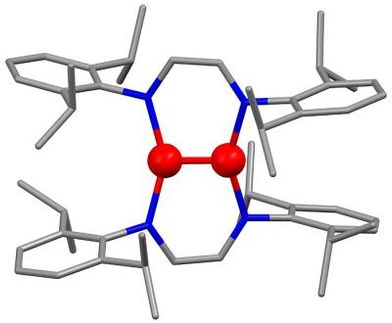DNA "tricked" to act as nano-building blocks
McGill researchers find new ways to manufacture nanotubes of controlled geometry, stiffness and porosities
Advertisement
McGill researchers have succeeded in finding a new way to manufacture nanotubes. Their building material is biological DNA.
A team of researchers, led by Prof. Hanadi Sleiman in collaboration with Prof. Gonzalo Cosa, both of McGill University's Department of Chemistry, can now tailor different geometries, rigidities and porosities into these nanotubes through the clever introduction of non-DNA molecules. This work is reported in the journal Nature Nanotechnology.
"It looks like our fabrication is in place," Sleiman said. "We are now looking at potential applications of these materials in drug delivery. It's too early to tell for sure, but this is certainly something worth exploring. DNA is an incredible scaffold for making nanotubes."
Nanotechnology's potential to affect social and economic development is dependent on scientists first being able to make the necessary molecules and materials. To make this happen, nanotechnologists are now using nature's code of life, DNA. It is precisely this property of chemical information stored in DNA that nanotechnology is now exploiting. In this case, DNA strands are programmed to assemble into complex one- two- and three-dimensional structures. By incorporating synthetic molecules into such strands of DNA, the Sleiman group provided nature's workhorse with further specific dialed-in structural and functional properties.
Using this method, Faisal Aldaye, Peggy Lo, Pierre Karam and Chris McLaughlin in the Sleiman and Cosa laboratories have demonstrated the first examples of DNA nanotubes with deliberately controlled geometry. Remarkable triangular and square-shaped tubes spontaneously form using these new techniques.
These nanotubes offer great potential, for example, for the construction of metal nanowires of different geometries. The DNA tube can be used as a mold into which metals are grown, creating microscopically thin wires that may have a wide variety of applications.
The team has also shown how these nanotubes can be created in an ‘open', single-stranded form and ‘closed' double-stranded form. These forms will be especially interesting for the encapsulation and selective release of drugs near the site of diseased cells.
Most read news
Topics
Organizations
Other news from the department science
These products might interest you

Systec H-Series by Systec
Safe, reproducible and validatable sterilization of liquids, solids and waste
Autoclaves with 65-1580 liters usable space, flexibly expandable for various applications

Whatman™ folded filter papers by Cytiva
Whatman folded filter papers
Convenient folded formats speed up your sample preparation

Get the chemical industry in your inbox
By submitting this form you agree that LUMITOS AG will send you the newsletter(s) selected above by email. Your data will not be passed on to third parties. Your data will be stored and processed in accordance with our data protection regulations. LUMITOS may contact you by email for the purpose of advertising or market and opinion surveys. You can revoke your consent at any time without giving reasons to LUMITOS AG, Ernst-Augustin-Str. 2, 12489 Berlin, Germany or by e-mail at revoke@lumitos.com with effect for the future. In addition, each email contains a link to unsubscribe from the corresponding newsletter.
































































